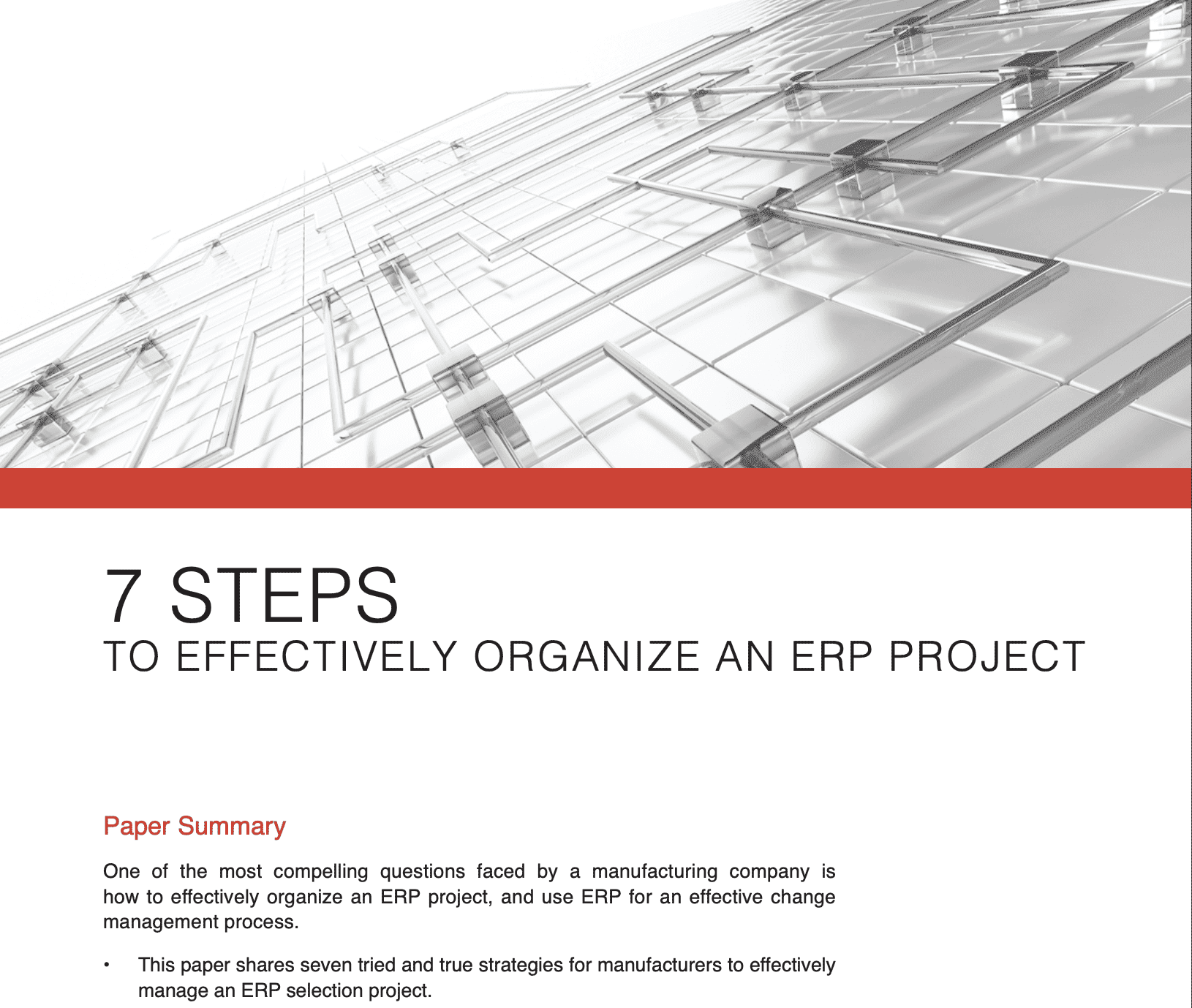Top 10 Distribution KPIs: Our Experts Discuss Today's Most Critical Metrics
By David Saunders, Senior Consultant
In the new now, distributors are challenged like never before: Supply chain networks remain exceptionally complex and unpredictable, competition is tougher every day and customer expectations are escalating. And, most important, margins are slim and getting slimmer.
Today, it’s important to do everything that can be done to shave costs, increase revenue and boost profitability. The question – and challenge – is identifying the processes and functions where new efficiencies, extra pennies and an additional tenth of a percentage point in margin can be found.
The right metrics will make the answer clear. With up-to-the-minute, detailed and accurate key performance indicators (KPIs) driven by data provided by your ERP solution, you can know which processes are working well (and which may be broken), determine target areas for improvements, and make informed, intelligent decisions that will boost your bottom line.
Which KPI’s are the most critical? We asked our expert distribution ERP consultants for their insight.
Customer Experience
1. On-Time Delivery (OTD)
This is the primary measurement of the efficiency of your processes, and it is simply measured as a ratio of the number of units delivered divided by the total units shipped. The definition of “on time” can vary depending on the customer and the industry, and whether shipping was handled in-house or by an outside provider. If partial deliveries are common, On-Time Delivery In-Full is a useful drill-down metric.
2. Customer Complaints/Problem Instances
Assuming that customer satisfaction is one of the leading goals for your business, this is the metric to look at first. A caveat: The root causes of customer complaints can be many: picking inaccuracies, mis-ships, shipping damage, slow Return Merchandise Authorizations (RMAs) and credits, and more. So, It’s smart to measure Complaints and these more granular metrics as well, and use any increases as the trigger to scrutinize the underlying processes and performance.
3. Total Order Cycle Time (TOCT)
TOCT has become an important KPI as business customers have come to expect Amazon-like delivery timeframes. With TOCT, we are measuring the time it takes to fulfill a customer’s order, but a similar metric for fulfilling your own purchase orders with your suppliers is also important. You should not only monitor for any increases in TOCT but also benchmark it against competitors.
Warehouse Operations
4. Throughput (Cases/Per Man-Hour)
As a high-level metric for warehouse efficiency, Throughput offers insight into how effectively your warehouse operation is utilizing its manpower in handling receiving, replenishment, order fulfillment and shipping processes. Your warehouse staff is one of your most critical assets and it’s important to make sure you are always using it in the most effective way.
5. Inventory Accuracy
A growing number of distributors are applying advanced analytics to help them balance inventory levels with service levels. To make that work, you need to know exactly how much inventory you have in stock. In fact, without at least a 98%-accurate cycle count inventory metric, you’re highly likely to have issues like stock-outs, long order cycle times, high back-order rates, lost sales and, eventually, poor customer satisfaction scores.

7 Steps to Effectively Organize an ERP Project
The 7 Steps to Effectively Organize an ERP Project is designed for ERP project teams from today’s forward-thinking manufacturing and distribution organizations.
- Read tried and true strategies for manufacturers to effectively manage an ERP selection project. See what it takes to be successful and more with this Download.
6. Capacity
The utilization of your warehouse capacity is important to know. This metric could be based on available cubic feet storage, number of pallet locations or available pick facings. If your company is using only 50% of its warehouse capacity, it may be wasting money. And, if more than 85% of your capacity is utilized, you’re probably unable to operate efficiently (or safely). Identifying the utilization sweet spot – where your warehouse, people and processes operate most efficiently – is key. Your ERP will help you make that calculation and help you understand and accommodate seasonal and temporary variability.
7. Safety
No one should argue with the need to minimize, monitor and measure incidents, accidents, lost time and lost productivity in your warehouse and fleet. Not only should we be genuinely concerned about the health and safety of our employees, but there are significant costs associated with not focusing on safety.
Financial
8. Revenue Per Employee (RPE)
Simple to calculate (revenue divided by number of employees) and easy to break down by function, RPE is a valuable indicator of productivity. Caution: RPE is highly variable by industry sector. Industry analyst data show that, in 2021, RPE for the distribution industry as a whole ranged from roughly $1.8 million to $600,000, with the average being around $800,000. But it would be more insightful – and more accurate – to set a benchmark using your own data, and then utilize percent change or increase/decrease as your metric.
9. Asset Utilization
Most people think about assets such as equipment, but you should also evaluate things such as receivables and inventory. In a low margin business such as distribution, how effectively you use all your assets can be the difference between being profitable and not.
10. Profitability
There are many different ways to measure profitability – and no matter which you choose, you should look at it for the entire organization, by product or product family, by facility, by customer and by customer group. What metrics are the most edifying? Gross Profit Margin makes it easy to see profitability trends over time. Net Profit Margin reveals exactly how much profit your company makes after expenses. EBITA (earnings before interest, taxes and amortization) provides an accurate view of your company’s overall financial performance. Profitability literally is the bottom line.
For other perspectives on key distribution metrics (and additional metrics to consider), check out:
• Top 35+ Distribution KPIs and Metric Examples for 2021 Reporting (Insight Software)
• 30 Financial Metrics and KPIs to Measure Success in 2021 (NetSuite)
• White Paper: Mind Your KPIs – Top Metrics Product Companies Should Be Monitoring (NetSuite)
David Saunders, Senior Consultant
David has more than 30 years of experience helping mid-size and large wholesale distribution and manufacturing organizations companies leverage modern ERP technologies, optimize their operations and accelerate their business processes.
Predictive Maintenance
Ready to know more?

Table of Contents
More ERP material...
The Undeniable Benefits of Implementing ERP in Food and Beverage Manufacturing
Data analytics holds the ability to highlight inefficient manufacturing processes and enable…
Emerging Technologies in Manufacturing Driving Business Growth
Data analytics holds the ability to highlight inefficient manufacturing processes and enable…
How Food Production ERP Improves Manufacturing Efficiency
Data analytics holds the ability to highlight inefficient manufacturing processes and enable…



